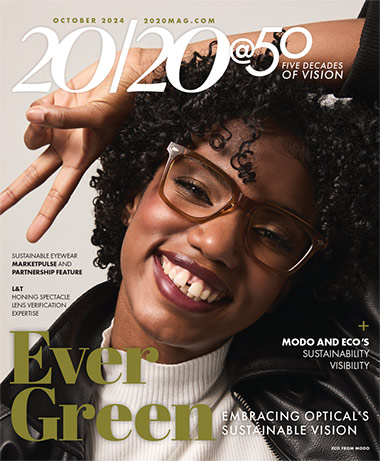By Kai Rands, ABOC, NCLEC

Proprietary eye-tracking technology has come onto the stage in designing progressive lenses to take into account visual behavior. But this is not the only context in which eye-tracking technology is useful for eye care professionals. An optician might notice, for example, while taking an interpupillary measurement, that a patient has intermittent strabismus in which the patient’s visual axes are misaligned a portion of the time. But how often? For what percentage of the time?
Observational eye-tracking has long been used in reading research, as Nicholas Wade describes in the article “Pioneers of Eye Movement Research.” Technological approaches began in the late 1800s. Several early methods involved making opaque contact lenses out of ivory or plaster with a slot over the pupil. A bristle attached to the opaque lens recorded eye movements. These methods required local cocaine-based anesthesia. Other early researchers placed a blunt tool on the eyelid. These devices connected to small drums that amplified the sounds made by saccades–the quick eye movements made to shift focus from one object to another.
Today eye movement tracking is non-invasive. Many current devices are screen-based. Screen-based systems are likely to provide invalid data for those with intermittent strabismus. A screen is only one object at one distance. Also, sitting in a chair watching a screen–although certainly common in contemporary times–does not account for eye movements while navigating in realistic environments. A spectacle-based eye movement tracking system addresses these issues.
In an article published in June of 2023, John Economides and his colleagues tested a commercially available spectacle-based system to monitor the occurrence of exotropia in children with intermittent exotropia. The system consisted of plano plastic lenses in which were embedded eight infrared illuminators. The corneal reflections of the illuminators were used to determine each eye’s fixation point. Two lens-embedded cameras detected the relative position of the pupils. A bridge-mounted camera recorded the scene in front of the patient. The data from all of these inputs were wirelessly transmitted to a tablet. The researchers were able to see the data from the system superimposed on the video-stream of the scene in real-time.
Economides and his colleagues presented a case study of one of the 44 participants in the study. This 6-year-old girl had experienced intermittent exotropia from age 1 year old. Data from almost 12 hours of wearing the system showed that she demonstrated exotropia more than half of the time at distance. The spectacle-based system provided key data that allowed the patient’s family to make an informed decision on treatment. At two months after surgical treatment, the girl no longer demonstrated exotropia. Surprisingly, at 14 months post-surgery, the girl showed exotropia 20% of the time, albeit at a lower amplitude. The parents had not noticed any occurrences of exotropia. Having objective data as well as subjective reports is helpful in making initial treatment decisions as well as long-term monitoring.
As technology develops at lightning speed, the interface between spectacles and other technologies can lead to creative innovations that benefit patients–our goal as eye care providers.










